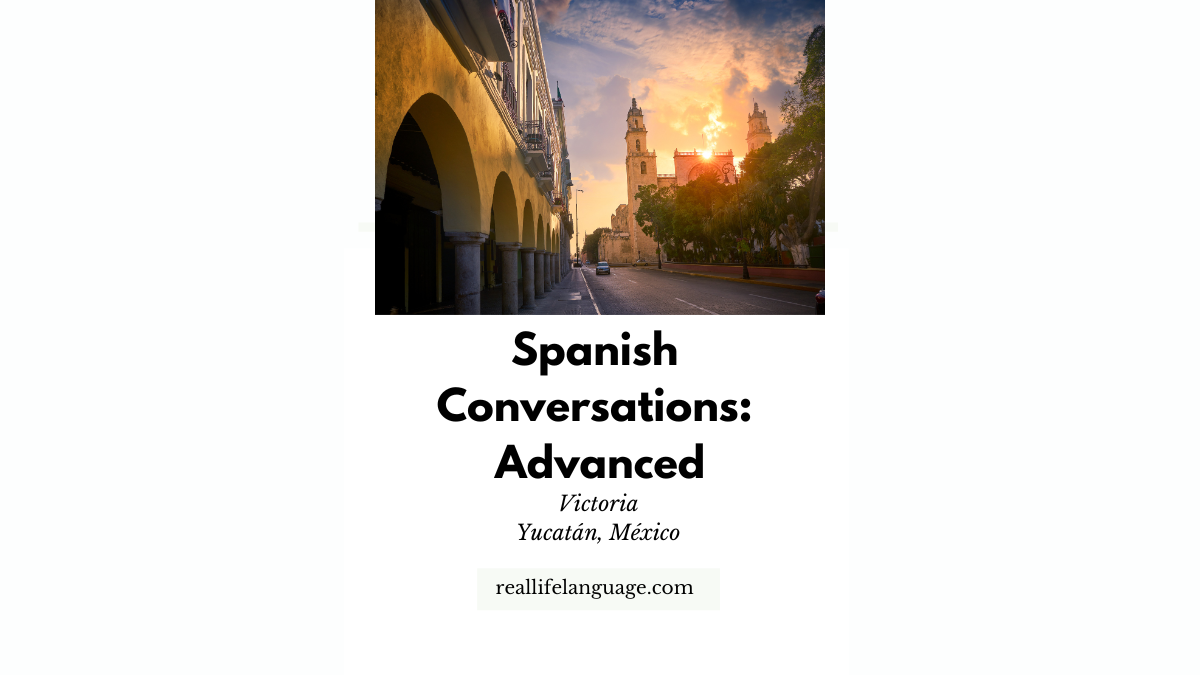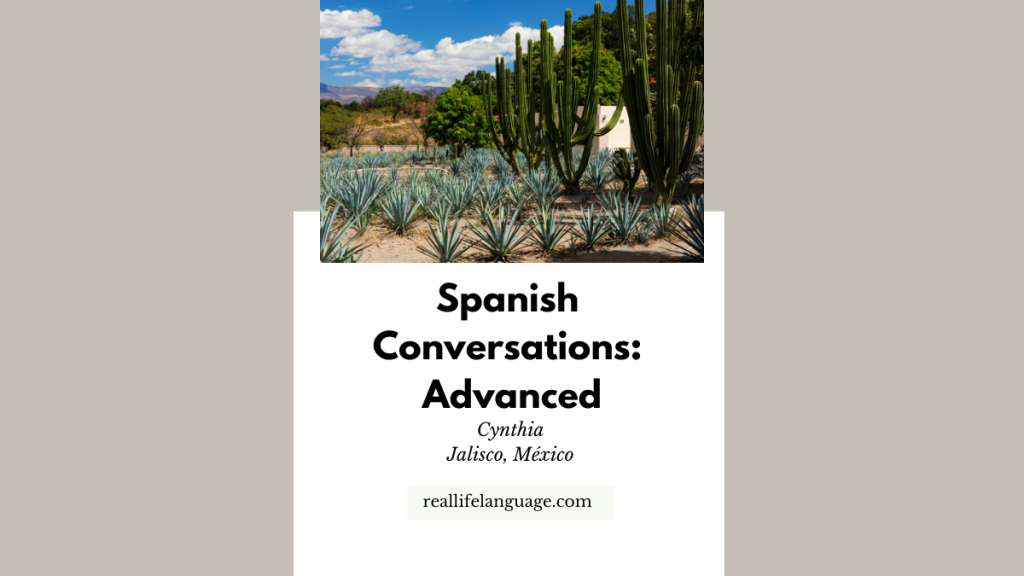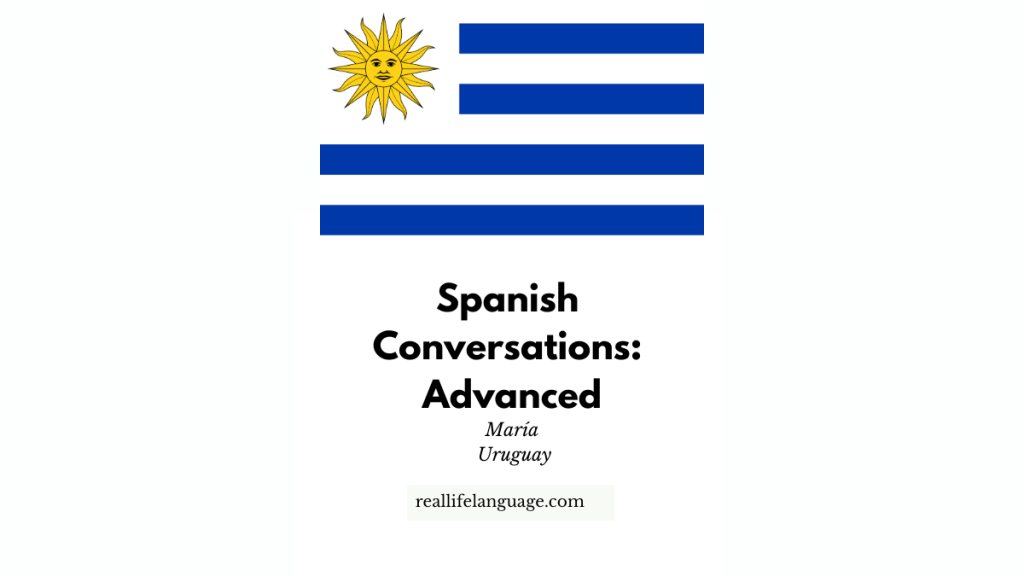
This article repurposes a conversational interview to help learners who want to learn advanced Spanish through real-life topics: life in Mérida, women in Mexico, the economy, housing, education, celebrations, food and the effects of the pandemic. The speaker in this conversation, Victoria, shares personal experiences and local vocabulary that make this an ideal resource for students who want to learn advanced Spanish with cultural context.
Meet Victoria: life in Mérida
Victoria is 25 and lives in Mérida, Yucatán. She studied tourism administration and has a master’s degree in public management and finance. She works as an English and Spanish teacher and is content director at an association that dedicates public spaces to parks. She mentions being recently married and having two adopted cats. Her voice is warm and conversational, and she often mixes practical description with personal reflections.
“I really like what I do. I really enjoy teaching.”
Women in Mexico: changes between generations
Victoria describes generational change for women in Mexico as both progress and ongoing struggle. She explains that older generations faced language and opportunity barriers, but modern women use technology and networks to claim space, demand respect and change social norms. She highlights safety concerns and regional differences that still affect daily life.
“We are definitely much better off than in past years… but the struggle is not over.”
Useful phrases to discuss gender and society
- La lucha por la igualdad (the struggle for equality)
- Sentirse seguro/a en la calle (to feel safe on the street)
- Tecnología y redes sociales (technology and social networks)
The economy and housing
Victoria views Mexico as a country with untapped potential and structural dependence on larger economies. She notes the pandemic’s impact on budgets and priorities. On housing, she explains how rising prices make buying a home stressful for young people; mortgages can last decades and limit other life choices.
“Sometimes your parents at 19 already had a house… now it takes more.”
Education in Mexico: structure and access
Victoria outlines the Mexican education system: three years of kindergarten (only one mandatory in some places), six years of primary, three years of secondary and three years of high school (where students choose electives). University degree programs usually last four to five years (medicine can be seven). She emphasizes that higher education is valuable and comparatively affordable, but access is unequal—many communities lack schools.
She recommends the documentary De Panzazo as a source of statistics and analysis on education in Mexico.
Parties and cultural celebrations
Parties are central to Mexican social life. Victoria describes how celebrations (baptisms, first communions, quinceañeras, weddings) often involve padrinos (godparents or sponsors) for cake, drinks, dress and more. Parties commonly start late and last many hours, sometimes continuing into the next day with a family reheated meal called a “recalentado.”
“If someone invites you to a quinceañera or a wedding, you can’t miss it—it’s a taste of very local culture.”
Food of Mexico and Yucatán
Victoria notes that Mexican food is often spicy and uses tortillas and corn in many forms. In Yucatán, cooking techniques include slow baking underground (giving a smoky flavor) and the use of seeds like pepita. Dishes she mentions: cochinita pibil (with recado rojo), tamales (regional variations), esquites, and sweets typical of Yucatán.
Key food words and sample sentences
- La tortilla — tortilla (corn or flour wrap)
- Cochinita pibil — slow-roasted pork from Yucatán
- Recado rojo — a spiced paste used for marinating
- Tamal — tamale (steamed masa with filling)
- Esquites — street-corn snack
Sample sentence: “La cochinita pibil se cocina en horno bajo tierra.” — “Cochinita pibil is cooked in an underground oven.”
Global issues and the pandemic
Victoria mentions world concerns such as the Russia–Ukraine conflict and stresses the importance of empathy and being informed. Regarding COVID‑19, she explains that the pandemic taught appreciation for small things, accelerated technological adoption in education and work, and forced people to learn about themselves and their relationships.
“The pandemic came to teach us to appreciate many things.”
Family and multicultural roots
Victoria comes from a multicultural family: her mother is Portuguese, some family lived in the United States, and her father is from Yucatán. This background gives her a hybrid cultural identity and makes food and family ties meaningful markers of belonging.
Practical Spanish tips for learners
This conversation is ideal for those who want to learn advanced Spanish because it mixes everyday vocabulary, regional expressions and cultural references. Below are targeted phrases, vocabulary and practice activities inspired by the interview.
Advanced vocabulary and expressions
- Padrinos — godparents/sponsors (used in fiesta contexts)
- Recado — spice paste (recado rojo is typical in Yucatán)
- Recalentado — reheated food (post‑fiesta meal)
- Desarrollo económico — economic development
- Gestión pública — public management
Conversation practice (try to say aloud)
- “En Mérida se come mucho con tortillas y semillas.” — Talk about local ingredients.
- “La educación pública es más accesible, pero el acceso no es igual.” — Compare public vs private education.
- “Las fiestas duran muchas horas y la familia participa mucho.” — Describe celebrations.
Pronunciation tips
- Roll the /r/ in words like recado and recalentado.
- Emphasise the vowel sounds in cochinita (co‑chi‑ni‑ta) to keep rhythm clear.
- Practice the ñ sound in mañana and señora.
Conclusion: use culture to learn
Studying real conversations like this helps learners who want to learn advanced Spanish by linking vocabulary to lived experience. Victoria’s interview offers authentic language about work, family, food and social issues—ideal content for listening, shadowing and speaking practice. Learners should practise the sample sentences, learn the key vocabulary, and reflect on cultural notes to improve fluency and comprehension.
To put it into practice: pick one section (food, education or fiestas), memorise five words, create three original sentences, and practise them aloud. Repeating this with different topics will build vocabulary, pronunciation and cultural understanding—essential steps for anyone aiming to learn advanced Spanish.
100s of videos to learn Spanish:
https://real-life-language.kit.com/b1531a6404
How to Learn Advanced Spanish: Insights from an Interview with Irene from Madrid

